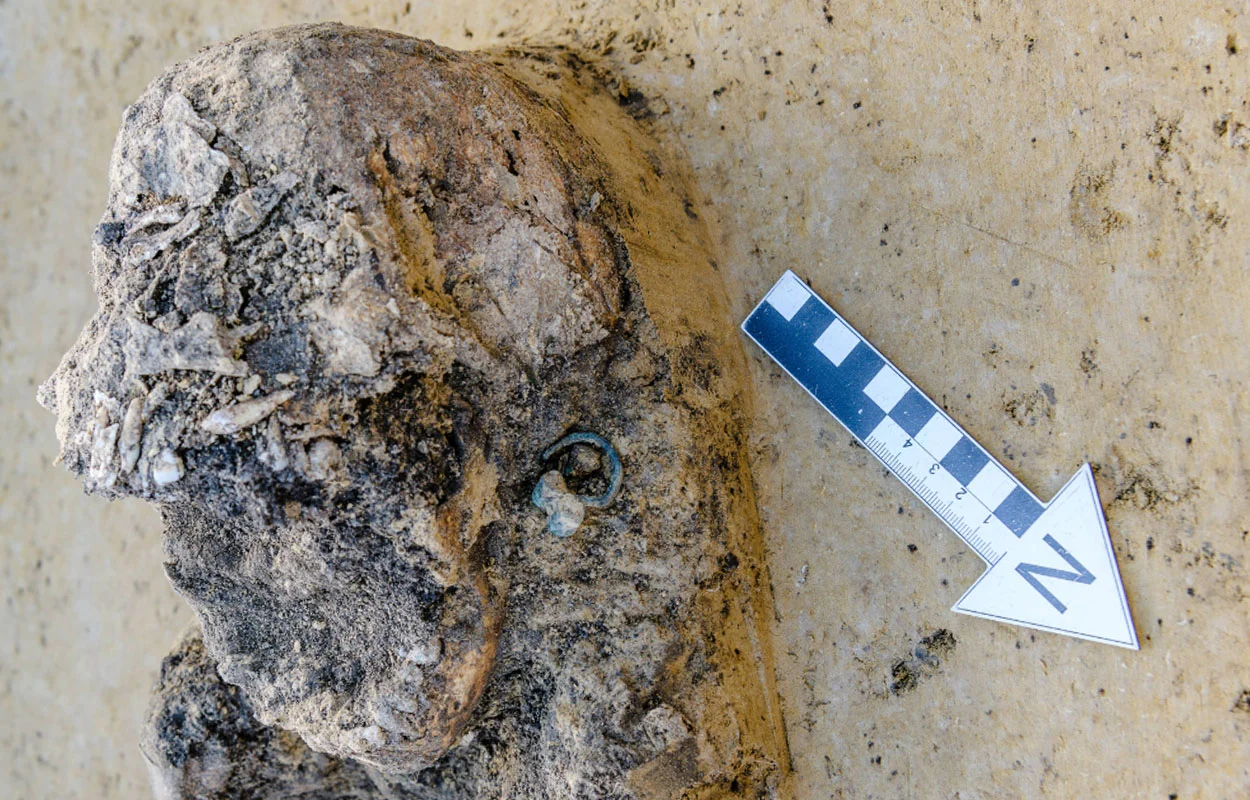Excavations for the SuedOstLink infrastructure project have revealed a major Slavic settlement and cemetery west of Nauendorf, Saxony-Anhalt.
Spanning 120 metres in length and up to 40 metres in width, the site contains over 600 features that open a fascinating window into medieval community life. The settlement includes: 16 pit houses, ovens, fireplaces, a watering hole, and even two animal burials.
Equally striking is a network of ditches, of which two types can be distinguished: broad, radial ditches one to three metres wide that likely served as defensive enclosures, and narrower, rectangular ditches about half a metre wide, used to mark individual farmsteads.
Stratigraphic evidence suggests that the enclosure ditches belonged to an earlier medieval phase reflecting a need for fortification. With the pacification of the region in the High Middle Ages, these were replaced by the smaller property ditches, indicating a more open village structure.
South of the settlement is a cemetery with at least 44 burials. Measuring 17 by 14 metres in the excavated section, the graves extended beyond the site’s limits. Their east–west orientation points to Christian burial practices, suggesting a High Medieval date and highlighting the integration of this Slavic community into Christian traditions.
Among the most notable discoveries is a grave designated 1142, a multiple burial that revealed traces of familial bonds even in death. Archaeologists found disorganised human bones above a stone casket, indicating the disturbance of earlier interments.
Within the casket, carefully sealed with a slab, was a smaller stone coffin containing the remains of a child in anatomical order. To make space for the child, the bones of an adult had been pushed aside, with additional remains found at the foot of the grave.
This poignant arrangement raises the possibility that the child had been laid to rest alongside a close relative, underscoring the importance of family ties in burial practices.
Other finds add further dimensions to the site. The remains of an adult dog were carefully placed in a settlement pit, its skeleton intact and undisturbed. Another animal burial, located 25 metres north, was found in a farmstead ditch.
“Together, the settlement and cemetery at Nauendorf illustrate the deep connections between domestic life, defense, faith, and family in the Slavic communities of medieval central Europe,” said the State Office for Monument Preservation and Archaeology Saxony-Anhalt
Header Image Credit : Klaus Bentele
Sources : State Office for Monument Preservation and Archaeology Saxony-Anhalt





